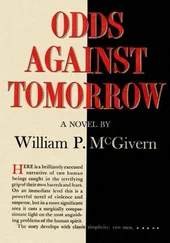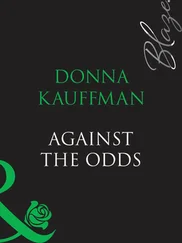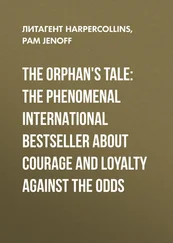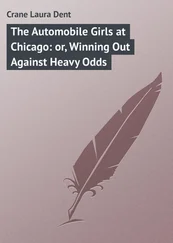They walked several minutes longer, until the tracks began to angle to the right. Hank continued straight, stepping over the tracks. They were now on a dirt road littered with trash.
“Keep walking,” said Hank. “Try not to get your feet stuck.”
Mitchell obeyed. The ground was still muddy. Occasionally his shoe landed on something squishy, a bloated rat carcass perhaps or something larger, but he didn’t dare look down. They kept to the median, where the ground was slightly higher and there was less debris. Finally they came to a stretch of smooth cement. Before them appeared an area of low brush. At the horizon the sky was beginning to lighten.
“Flatlands,” said Hank.
“What do we do here?”
“I’m going to rest,” said Hank, lowering himself to the concrete. “I’m tired.”
“We’re just going to sleep on the ground?”
“That’s right.”
“And then?”
“Then we make sure that we’re alone.”
10.
It wasn’t so bad if you wrapped a towel around your face like a keffiyeh. There was an art to it. You had to cover as much of your face as possible, but the fabric couldn’t entirely cover your eyes. If you yanked the towel down too much, the stink got in — and then it invaded you, gumming up your pores and pricking your eyes. But if you tucked the edge of the towel just below your eyes and pressed the fabric close to your cheeks, you could endure five minutes, which was enough time to fill most of a shopping cart.
Jane hadn’t mastered the technique. Almost instantly she had sprinted, gagging, for the exit. And she did not return. When Mitchell rumbled his shopping cart out of the warehouse, she was gone.
There was only the loading dock and the stacks of cans in their carts and the empty expanse. Hank Cho had been right about the Flatlands. The lands had been flattened. There was little evidence that buildings had stood here just one week earlier, and just as little evidence of the flood: only a puddle here and there, as after a light rain. Few structures remained three-dimensional — a tepee of cracked plywood, brick foundation slabs, two concrete walls leaning on each other for support like a pair of old drunks. Most everything else had been pounded into the ground or wiped into the ocean, rinsed like a soiled plate after dinner. The only surviving buildings appeared to be the oldest ones.
Before Mitchell and Jane had even awoken that morning, Hank had discovered a stone church standing on what he believed had been East 100th Street (he found the street sign several yards from the building, spiked halfway into the ground, though he’d also found signs for East 101st Street and East 99th Street farther down the block). There was no bathroom — no plumbing or electrical wire — but the interior was surprisingly clear. The floor was dry. Other than a smattering of bloated loofahs that, in the antediluvian era, had been prayer books, the only evidence of a flood was the peculiar arrangement of the wooden pews. They crowded in the entrance, stacked nearly to the ceiling. It was as if the pews had tried to climb over one another in a desperate attempt to save themselves from drowning. The pews had remained in this configuration when the floodwaters drained from the church, but the structure was flimsy; Hank gave a shove and like a scaffold it tumbled to the ground with a riotous clatter.
One of the stained glass windows was intact. It depicted two serpents, two deer, and two eagles. The background was royal blue, and the animals stared with large eyes toward the heavens.
Mitchell and Jane found roomier quarters on what had been Flatlands Avenue. The Canarsie Bank Trust Company was an old financial fortress, the kind built in the early twentieth century, modeled after an Italian Renaissance palazzo, with touches of brazen American showmanship. It was eerie to come across this beacon of high business authority in the middle of the desolate, flood-ravaged badlands — like encountering a monolith on the moon. The facade was white limestone brick, and the double-high top story was set behind a series of columns. The attitude of the three-story building was best expressed by the granite eagle that perched over the high entry arch; it seemed excessively prideful, the eagle, the way it surveyed the wreckage of the neighborhood. The newer, cheaply constructed buildings that had crowded around it in recent years were now less than rubble. The Canarsie Bank Trust had outlasted them all.
Jane’s phone rang.
“Who is it?” said Mitchell.
“Tewilliger,” Jane whispered. She gestured for him to continue inside the building.
The front door had shattered, but it still hung on by the hinges; it looked as if someone had burst through the center of it with a battering ram. Mitchell reached inside and turned the bolt lock. Then he pushed the door. It fell flat over.
The interior was grander than the exterior. A dark floor of red travertine, stately brown teller counters, globe-shaped pendent lamps. Since the front entrance was raised, the flooding hadn’t been catastrophic; the waterline reached only to chest level. As in the church, the loose furniture had huddled together in fear. The clerical desks and chairs were piled in one corner like a bea-ver dam.
Mitchell stepped across the atrium and creaked through an ancient turnstile. The air was thick with dust; it rose in puffs from the blood-colored floor with every step. A flight of stone stairs took him to the second level. Here was a lounge, lined with bookshelves and metal cabinets, the drawers all open, files spilling out. It looked as if it had been ransacked by burglars unable to find what they were looking for.
He forgot everything and decided he was exploring an abandoned world at the edge of the universe. There was no sleep or sadness here and beside him was a beautiful girl with long blue hair and soft violet eyes who would live with him happily ever after in a castle by the sea. They would speak to each other without sound and daydream their lives away.
“Mitchell?” Jane’s voice was frantic and it made everything rush back to him, especially the fear.
“Up here.”
When she appeared in the stairwell she was holding the collar of her shirt over her mouth.
“Phone died,” she said. “But we were about finished anyway.” She coughed. “This place is not to code.”
“Yeah, but it’s beautiful.”
“Compared to its neighbors.”
“Everything OK with Tewilliger?”
“She sat out the flood in the office. The tower was leaning in the winds, but she survived. She’s with a nephew in Virginia. And quite pissed.”
They climbed to the third floor. The dust puffed around them. In the inner chambers they found couches that had been shielded from the rain. Jane sat on one; the leather gave generously.
“I could sleep on this,” she said. “But last night I slept on asphalt.”
In the outer offices — those facing the street — the storm had sucked out the windowpanes and the rooms were caked with bird droppings that rose in bent, conical stalagmites. The water stains on the white plaster wall looked like cat’s eyes, concentric circles in alternating shades of brown.
“Another thing about Tewilliger,” said Jane. She bobbed on the leather cushion.
“Yeah?”
“She’s suing Charnoble.”
“Why?”
“Intentional infliction of emotional distress. For making her work on the day Tammy hit.”
“Wow. Good for her.”
“She has a case. She can prove that Charnoble understood exactly the danger of the hurricane. It’s all in your memos, after all. A suit could bring down the whole company. Just look at Seattle.”
“Wouldn’t she just qualify for some type of worker’s comp?”
“That’s the best part. Apparently Charnoble neglected to sign FutureWorld’s own insurance forms. He’s not insured.”
Читать дальше












